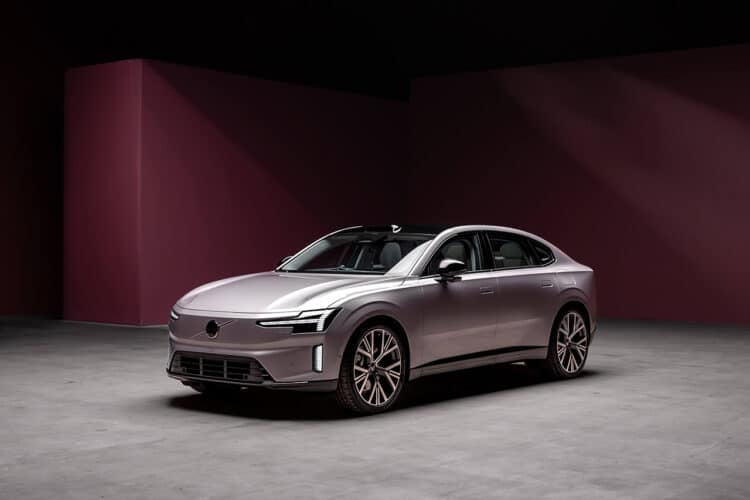Volvo’s New Car Made with 29% Recycled Aluminum: A Major Step Toward Environmental Sustainability
Volvo, a pioneer in sustainable automotive development, has recently unveiled a new vehicle that incorporates 29% recycled aluminum in its construction. This innovation is part of the company’s efforts to reduce the environmental impact of car manufacturing and move toward a circular economy.
Why Recycled Aluminum?
Aluminum is a metal that can be recycled infinitely without losing its quality. Recycling aluminum uses up to 95% less energy than producing it from raw ore and results in significantly fewer greenhouse gas emissions. Therefore, using recycled aluminum not only conserves natural resources but also plays a key role in mitigating climate change.
Technical Features of the Car
The new Volvo vehicle utilizes recycled aluminum in the body and parts of the chassis, effectively reducing the overall weight of the car. This contributes to improved fuel efficiency and better dynamic performance. At the same time, safety and structural integrity are preserved through the use of a carefully engineered combination of lightweight yet strong metals.
A Step Toward Environmental Goals
This initiative aligns with Volvo’s international commitments and long-term goals to reduce carbon emissions and adopt sustainable materials. The company aims to become a “carbon-neutral” organization by 2040, and widespread use of recycled materials is a core part of that strategy.
Impact on the Automotive Industry
Volvo’s approach can serve as a model for other car manufacturers to prioritize the use of recycled materials. If adopted as an industry standard, this strategy could lead to a future of car production that is significantly more sustainable and environmentally friendly.
Thursday, March 6, 2025
According to the Iraq News Chamber and Eghtesad Online, Swedish carmaker Volvo has unveiled its new all-electric vehicle, the ES90, which boasts an impressive range of 435 miles (700 km) on a single charge. Even more impressively, the electric car can travel 186 miles (322 km) after just 10 minutes of charging.
The latest Volvo ES90 features an advanced 800-volt system, making its debut in this fully electric model. Compared to traditional 400-volt systems, the 800V architecture provides multiple advantages, including faster charging, improved performance, and greater efficiency. Moreover, the vehicle’s range is enhanced by connecting its 106-kWh battery to a 350-kW fast charger.
800V Technology for Faster Charging
Anders Bell, Head of Engineering and Technology at Volvo, stated:
“Our 800V technology represents another major technological upgrade for our customers as we transition to full electrification. It makes our electric vehicles more efficient, helps you charge your Volvo faster, and lets you drive farther on a single charge.”
The entire electrical system was upgraded to support the 800V setup, including the battery cells, electric motors, inverters, charging system, and climate control systems. This overhaul enhances charging speed, overall efficiency, and vehicle performance.
A higher-voltage system delivers more power and greater range while using the same current as a 400V system. It also reduces heat generation and enables ultra-fast charging of up to 350 kW. The 800V system includes lighter motors and components, helping reduce the vehicle’s weight, which further boosts performance, acceleration, and driving range.
An all-new battery management software improves charging efficiency, cutting the ES90’s 10%–80% charging time by 30%, bringing it down to just 20 minutes.
A Step Toward Net-Zero Carbon Emissions
The ES90 stands out not just in battery technology but also in sustainability. The car incorporates recycled and natural materials that help reduce CO₂ emissions. The electric vehicle is made from 29% recycled aluminum, 18% recycled steel, and 16% recycled polymers and bio-based materials. Additionally, the interior wood panels are made from FSC-certified wood.
The car also features a Battery Passport, powered by blockchain technology, which tracks the origin of raw materials like lithium, cobalt, nickel, and graphite used in the battery. Volvo notes that the Battery Passport also displays the vehicle’s carbon footprint and other key environmental data.
This development aligns with the company’s broader vision to reach net-zero carbon emissions by 2040. This goal includes carbon-neutral production and sourcing, alongside an expanding lineup of zero-emission transportation and construction solutions.
Conclusion
With the introduction of its new model, which features 29% recycled aluminum, Volvo has taken a bold step toward sustainability and environmental stewardship. This move not only helps conserve energy and natural resources but also demonstrates how engineering innovation can simultaneously enhance performance and protect the planet.
The ES90 excels in both battery technology and sustainability, incorporating recycled and natural materials that reduce CO₂ emissions — including 29% recycled aluminum, 18% recycled steel, and 16% recycled polymers and bio-materials.

